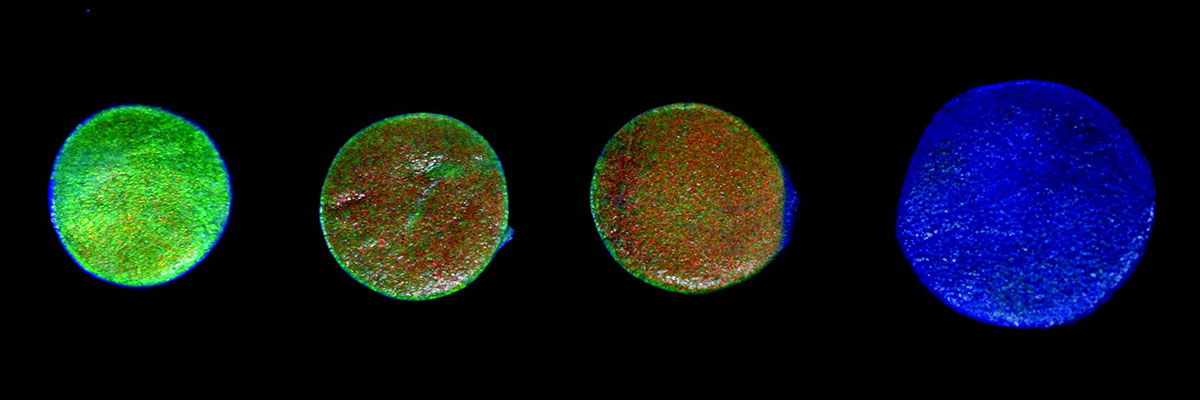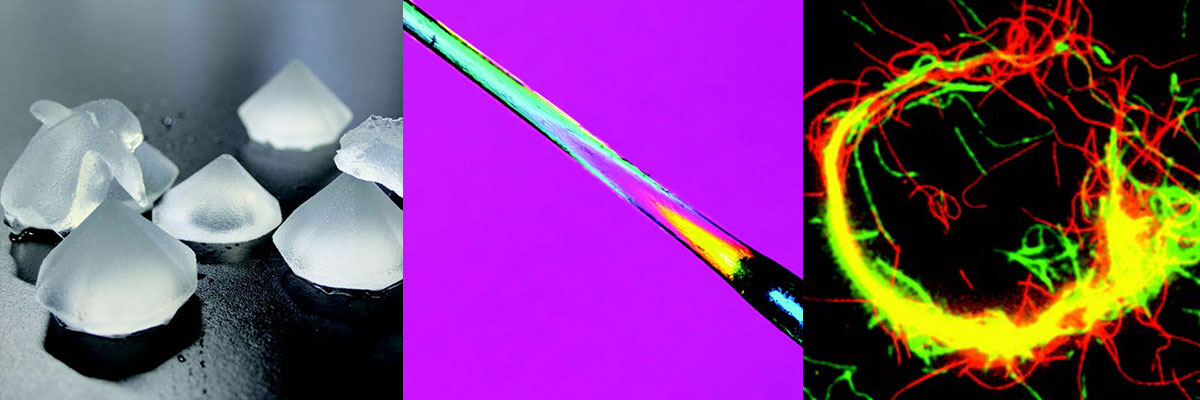The era of soft matter
Research Highlight | March 01, 2019
This article is an excerpt from the research magazine “Tackling Global Issues vol.1 Soft Matter: Material of the Future.” Click here to see the table of contents.
It is no exaggeration to say the progress of mankind has been aligned with material revolutions. Some time periods are even named after materials: the Stone, Copper, Bronze and Iron ages. The era of hunters, dating back millions of years, was marked by the use of tools made from stone, followed by agricultural societies characterized by ceramics. In city-states, which rose around 1000 BC, metals began having an impact on people’s lives. In modern times, the 19th century was the age of iron and steel that led to the first Industrial Revolution, and the 20th century saw the advent of more sophisticated materials like polymers that ushered in the spread of plastics.
Our understanding of condensed matter physics deepened in the 20th century, paving the way for the development of electric, electronic and other devices that are taken for granted today. Key materials for these objects were hard matter such as metals and semiconductors. In the 21st century, we have entered an era of soft matter. Look at things around you. Cathode-ray tube displays have been superseded by liquid crystal displays, and a considerable number of beverages are now packaged in plastic containers. Hard and heavy materials have increasingly been replaced by soft and light materials. Because the latter materials require less-energy to transport and are considered essential for creating a sustainable society, efforts to advance the study of soft matter are expected to accelerate.
What is soft matter?
As the name suggests, “soft” substances are collectively called soft matter. But what does soft mean? In physics, the “hardness” and “softness” of substances are de ned by their response to external forces. While hard matter shows certain resistance to external stress and conditional changes such as room temperature, light and pressure, soft matter materials easily ow and deform in response to such external stimuli. They may be elastic, viscous or both, with their phases changing when undergoing deformation. Take toothpaste as an example. It behaves like a solid when it sits on a toothbrush, but it flows like a fluid when squeezed from a tube. A precise definition is difficult for soft matter because it has a wide range of properties that are somewhere between solids and liquids. Such properties allow soft matter to take various forms
Typical soft matter materials include colloids, polymers, surfactants, liquid crystals and gels. They are found in everyday objects ranging from paints, soaps and fabrics to food such as tofu, milk and yogurt. Even our bodies are made of soft matter, except for hard tissues such as bones and teeth. Today, soft matter is ubiquitous, but it is a relatively young academic field. Many aspects of soft matter remain a mystery.
Soft matter is characterized by its structural and dynamic complexity. In hard matter, the arrangement of atoms is highly ordered, enabling researchers to understand or predict the overall properties and behavior of a material from its average molecular arrangement and components. However, gaining such a clear, overall picture of soft matter from a partial analysis is not easy because its structures and dynamics are heterogeneous and hierarchical on every scale from microscopic to macroscopic. What soft matter materials have in common is that they consist of large molecules or an aggregate of molecules that moves collectively. They are held together by weak intermolecular interactions. These features give soft matter such characteristics as strong and nonlinear reactivity to external forces as well as a slow and non-equilibrium response to external stimuli.
Although soft matter shares certain common characteristics, it does not have fundamental encompassing theories like hard matter, which is marked by general relativity and quantum mechanics. The field of complex soft matter grew out of the traditional field of condensed matter physics. Condensed matter physicists in the early 20th century generally looked into tiny details of properties of relatively simple substances in solid and liquid states. The field of soft matter rose to prominence after French scientist Pierre-Gilles de Gennes received the Nobel Prize in Physics in 1991 “for discovering that methods developed for studying order phenomena in simple systems can be generalized to more complex forms of matter, in particular to liquid crystals and polymers.” Currently known as the “father of soft matter,” de Gennes pioneered the field by seeking to understand soft matter in terms of physics.
Since then, the field has rapidly grown by incorporating aspects of different disciplines including physics, chemistry, engineering and biology. Because of soft matter’s properties and behavior, hopes are also high that exploring life science from the standpoint of soft matter could unravel the fundamental principles of life.
Future to be shaped by soft matter
Soft matter has attracted global attention not only as a promising field but also for its high potential for practical applications. In recent years, hydrogels have become a high-profile element in soft matter research alongside liquid crystals and rubbers. Hydrogels, whose soft and hydrated forms exhibit some similarities to human tissues, have shown significant possibilities for various medical applications, from biomaterials for artificial joints to advanced materials that will help regenerate cartilage and discover cancer at an early stage. Indeed, hydrogels have already been used to make highly functional contact lenses and some medical devices that require direct contact with the human body.
Versatile soft matter could form key future technologies in many other industries, including electronics, automobiles and aviation, as well as areas of the environment and robot engineering. For example, soft matter could enable development of water purification technology, and a robot with artificial intelligence could improve nursing and other services for a welfare-oriented society. Using soft components in automobiles would enhance the safety of passengers because such materials can absorb the energy from collisions. More sustainable soft substances with higher energy efficiency would help cut energy consumption, while soft construction materials could increase buildings’ resistance to natural disasters such as earthquakes. Daily items like clothes, food and cosmetics would also become more sophisticated and functional as our understanding of soft matter deepens.
Despite the myriad possibilities, the mechanical weakness of soft matter materials has limited their applications. A major challenge is to toughen the materials while retaining their softness. In recent years, significant progress has been made to solve this problem. But many hurdles remain, especially in cases in which the materials are applied to the human body. These materials must be nontoxic and nonhazardous, and their quality must be strictly controlled.
This publication features studies that offer leads or models for solving such issues while giving a glimpse into efforts by researchers dedicated to developing highly functional soft matter materials. Seemingly unrelated advanced areas of soft crystal and active matter are also covered in this publication.
Click here to see the table of contents.


